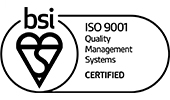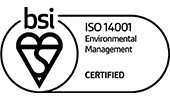A blog from Steelcase – Workplace Design: Building a Neighbourhood
Despite employers’ best efforts to entice people back to the workplace with free snacks and fun events, people are dragging their feet. Their reluctance isn’t about COVID or about flexible working either – with hybrid work being embraced by 71% of global leaders (research from Steelcase).
Theories about why people are hesitant to return to the office range. But maybe the most obvious reason is being overlooked: Do people believe anything has really changed if everything simply looks the same?
In workplaces around the world, companies have adopted hybrid work policies, but haven’t changed their offices to support their new realities. Some say they’re waiting until employees are back in the office to make changes. But hybrid work means people will come and go at different times and, without changes, the workplace is often likely to feel empty and lack energy. After two years of isolation, who wants that?
Hybrid work also means people will spend a lot more time on video calls and will look for more privacy to meet with remote teammates. Or worse, they’ll do video meetings in the open and become the hybrid version of the office loud talker.
Hybrid work policies will work better if a company’s space changes in tandem. The new era of hybrid work means people will have choices about where to work and, in many ways, the office has to work even harder to attract people and keep them coming back. Offices will need to earn people’s commute by meeting a new set of needs: support hybrid work, establish connections, create a sense of belonging and promote well-being — all of which suffered during the pandemic.
A new inspiration
This requires a shakeup in thinking about the future of the office. Rather than basing office design on the need to fit more people into less space, the workplace should draw inspiration from a new source that is less about efficiency and more about humanity and neighbourhoods— the vibrant communities in which we live that help people to thrive.

Why neighbourhoods?
Neighbourhoods exude vitality and energy — nothing is static — places and activities adapt and change. The neighbourhood is where people form relationships, feel a sense of belonging and build trust.
Today, organisational psychologist and author Adam Grant agrees. “A better vision for a workplace is a community — a place where people bond around shared values, feel valued as human beings, and have a voice in decisions that affect them,” says Grant. The best neighbourhoods are ones that foster inclusion and exude personality, where ideas are born and trends are launched.
This is what people at work need more than ever before.
Building a neighbourhood at work
Companies can create diverse neighbourhoods in their workplace as a tangible way to communicate their values and shift their culture.
Neighbourhoods at work, like the ones people live in, are a homebase for people and teams, departments or project teams. They include a variety of interconnected spaces that support different types of work, a mixture of uses and the natural flow from one to another. They include:
- Individual spaces assigned to one person or shared amongst the team
- Collaboration spaces for in-person and virtual interactions
- Places with appropriate privacy for individual heads down work
- Areas to gather, socialise and learn with teammates
Neighbourhoods become a destination, where people feel comfort and confidence, they can find their teammates and the tools they need to do their work.
Key design principles
Me & We
Just as city neighbourhoods have homes and shared spaces, the new neighbourhood at work supports both individual and team work. The amount of space for each will vary, but they support people doing different types of work throughout the day. They help people make quick shifts and give people more options and autonomy over their day.
Fixed-to-Fluid
Great neighbourhoods evolve when new people move in or a new store opens. At work, change is constant, sometimes in small ways as teams need to add more people, or in significant ways when they need more collaboration spaces. A hybrid neighbourhood is modular and flexible — embracing change instead of resisting it.
Open & Enclosed
Privacy in the office has become even more important during the pandemic. People struggled with significantly open office plans before and now, after working from home, are even more sensitive to the need for control over their privacy. Great neighbourhoods blend private and public spaces, making the neighbourhood diverse and dynamic.
Braiding Digital & Physical
Video meetings are a new norm in the office, and everyone needs to see and be seen, hear and be heard. The technology needs to be easy to use, but having a space that’s the right size with the right features in place is key to making it work.
Let’s think about your workplace in a whole new way. If you’ve been inspired by these insights from Steelcase, get in touch!
Steelcase Research and Insights: new workplace research, insights and inspiration about work, workers and the places where work happens: www.steelcase.com/research








